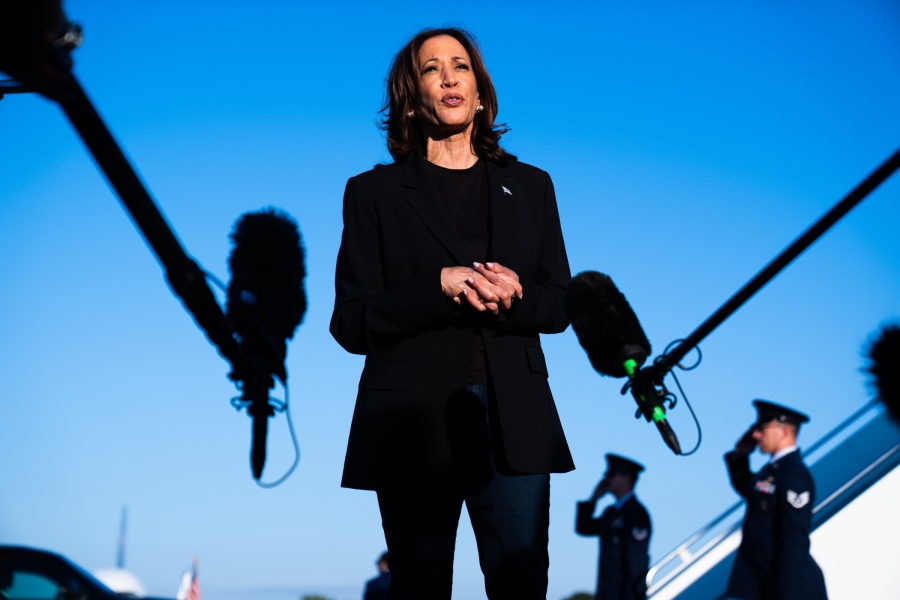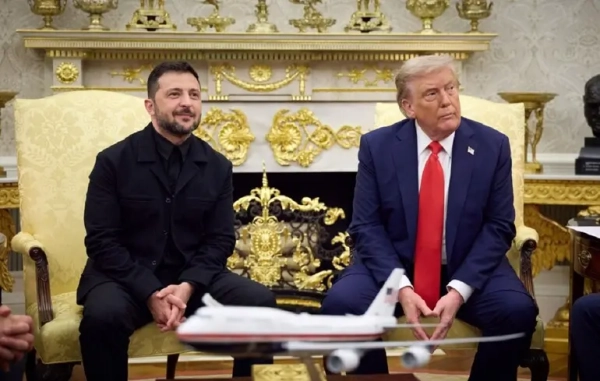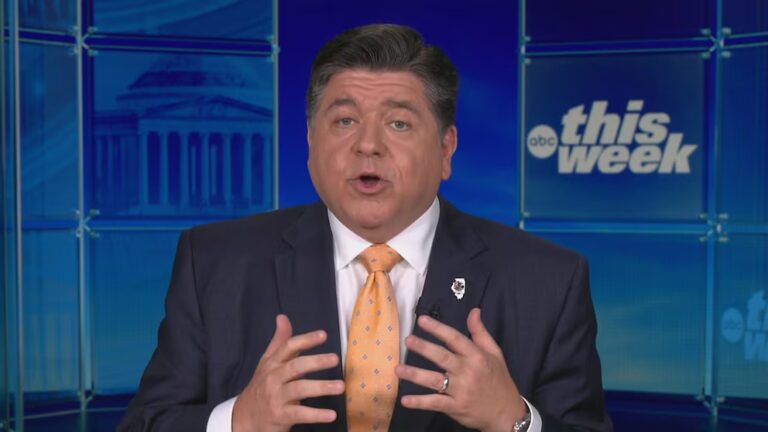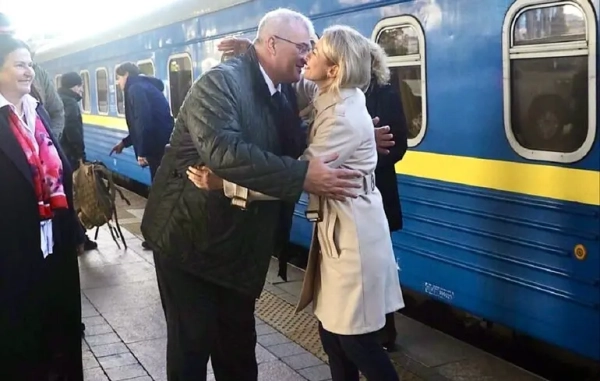
If you’re a loyal Vox reader, there’s a good chance you’ve probably already made up your mind about whether to vote in the 2024 election. You might be one of the 58 percent of Americans who say that they’re following political news “very or fairly closely.” You might also know that there’s a debate raging over whether Vice President Kamala Harris should be doing more news interviews. And you may have heard that Harris recently recorded an interview with Alex Cooper, host of the ultra-popular, women-focused podcast Call Her Daddy.
If you’ve never heard of that show, that’s kind of the point: Harris’s interview is part of a blitz of interviews, appearances, and sit-downs she’s doing this week with outlets that have large, loyal, and harder-to-reach audiences. Those engagements are all attempts to reach undecided voters. Yet it’s also a careful strategy to beat back accusations that she’s avoiding traditional — and tougher — media. By doing an array of softball interviews, Harris can continue running a vibes-based campaign against Donald Trump (who isn’t offering much substance to begin with), and avoid fumbles on policy or details — like the kind she made back in 2021 when she largely stopped talking to the press.
That 40-minute Call Her Daddy interview — largely focused on Harris talking about her personal history, career trajectory, stance on reproductive rights, and criticism of her opponent — didn’t lack substance. But it’s also not a substitute for more policy-focused conversations with legacy outlets that still have sway over large segments of the electorate.
Harris’s team, at least, argues that critics of her media approach so far are missing the point.
By talking to mostly influencers, content creators, podcast hosts, and radio shows, the vice president can reach the voters they need right now. “If you consume political info, you want to consume political info. Most of the remaining voters we need to talk to don’t,” Rob Flaherty, Harris’s deputy campaign manager who used to run the White House’s digital strategy, said Monday on X.
But this whole argument misses a few deeper tensions about the media and campaign landscape in 2024. Traditional news consumption in general is on the decline — though it’s still the primary way most Americans get informed. Meanwhile, alternative and social media news consumption is rising quickly. So while the influence and reach of the outlets, journalists, and reporters best able to seriously vet and interrogate politicians and candidates is gradually eroding, the sway and popularity of influencers and microcelebrities is growing.
These media dynamics are all colliding with the Harris campaign’s final-weeks imperative to find whatever ways it can to turn out marginal voters who are deciding between Harris and not voting, and the fewer than 5 percent to 10 percent of voters left truly undecided. It’s those niche audiences that the Harris — and Trump — campaigns are trying to reach by sending candidates to these less serious, non-journalistic platforms. And, in the process, both campaigns can continue to protect their nominees from gaffes, tough questions, or unhelpful media cycles.
Some have justified the vice president’s avoidance of hard-hitting interviews on the grounds that Trump is both a unique threat to democracy and a perpetual font of lies. But her campaign strategy could also be a preview of an administration that lacks transparency with the press and the public — a recipe for a lack of accountability.
Harris and Trump’s new media strategies are a window into the future
The Call Her Daddy interview is just one of the many appearances Harris and her running mate Tim Walz are making this week with friendly or noncombative outlets. The vice president will also be a guest on The Howard Stern Show on Tuesday, sit down with both Stephen Colbert of The Late Show and the ladies of The View midweek, and then participate in a Univision town hall later in the week. She also recorded a tougher 60 Minutes interview last week for Monday night, and has also done some human interest-style interviews for BuzzFeed and Wired’s popular Autocomplete Interview. Walz, meanwhile, sat for a Fox News Sunday interview and will appear on an episode of Jimmy Kimmel Live.
These are a combination of new, legacy, and alternative media appearances that contrast with how Harris had been navigating the media before the fall. The vice president, like President Joe Biden before her, has been pretty media-shy. That guarded-media strategy allowed Biden and the White House to avoid too much scrutiny once the campaign season began. And it was especially noticeable when compared to Donald Trump’s all-encompassing media presence. Even now, as Trump speaks to the press, his running mate, Ohio Sen. JD Vance continues to do an array of interviews with tough or unfriendly outlets.
Harris has largely continued this approach with the press. She prefers to talk to local TV and news outlets, participate in sit-downs or interviews with friendly hosts, and she has only done a handful of cable or network TV interviews since becoming the presidential nominee — on CNN and MSNBC.
From the campaign standpoint, that decision aligns with what Harris may need to be doing to shore up support from the Democratic base and persuade undecided voters. She’s talked to journalists and news shows in Arizona, Michigan, and Pennsylvania, for example, and spoken to podcasts, TikTokers, and shows that cater to young audiences, to women, and to Black and Latino Americans. But it’s also come at the expense of talking to large traditional outlets, like any of the major national newspapers.
Seeking friendly confines for interviews is not just a phenomenon happening on the left, or limited to progressive- or liberal-minded media and politicians. Trump’s campaign has been doing a similar thing with podcasters and video content creators, cozying up to YouTuber-turned-fighter Logan Paul, and appearing on a range of podcasts like Full Send, This Past Weekend With Theo Von, and Lex Fridman Podcast — or sending his running mate JD Vance to appear in his stead.
On the Republican side, it’s no coincidence that the majority of these podcasts and YouTube shows have overwhelmingly male — and young male — audiences. The gender gap in support for Republicans and Democrats has been one of the major themes of the election so far.
But again, these shows all have vast and loyal audiences. Their listeners trust these hosts and influencers; they form parasocial bonds; and they don’t necessarily view them in the same category as cable news, newspapers, or local news. This dynamic is something Howard Stern, Alex Cooper, Lex Fridman, and Theo Von can all offer to Kamala Harris or Donald Trump without the downside of getting confrontational questions or mired in the weeds of policy and process.
This new media focus comes at the expense of information and education
Putting aside these developments, the journalists and media outlets raising concerns now do have a point about how healthy this all is for democracy and interrogating elected officials. These podcasts, influencers, and online shows are just the latest addition to a patchwork of siloed media ecosystems, each with its own arbiter of truth, fact, and mix of opinion. Call Her Daddy listeners don’t necessarily overlap with listeners of The Joe Rogan Experience, who probably don’t overlap with Pod Save America or The Daily listeners.
At the same time, the hosts and pundits who are on the rise because of this shift in media and political news consumption aren’t necessarily the best equipped to interview or delve deep into policy with politicians or candidates. The Call Her Daddy interview, for example, was a fine form of infotainment — Harris and Cooper talked extensively about reproductive rights, the Supreme Court’s overturning of Roe v. Wade, Harris’s work to prosecute sex crimes, and her upbringing. But it wasn’t necessarily the most stringent interview: Harris didn’t offer any new proposals or expand on positions or plans she has already released or talked about in speeches — nor was she pressed on them.
Similarly, Trump’s interviews with his own preferred podcast hosts don’t really generate many headlines for any new policy, or any hard questions about Project 2025 (the conservative blueprint for his presidency) or his attempts to try to overturn the 2020 presidential election. Whatever news they generate is for viral or meme-worthy moments, and instead serve to make him come across as more personable or relatable. Instead, it’s Vance who is charged with being Trump’s attack dog, taking on the press, answering tough questions about his past and the president’s positions, and talking about policy.
At this point in the campaign cycle, Theo Von, Lex Fridman, and Alex Cooper may have more impact in reaching specific audiences than a nightly news anchor or Sunday show host. But they can’t do what legacy outlets, journalists, and interviewers can to interrogate those in power.
But the media ecosystem in 2024 is an early display of what may be yet to come as more of these kinds of creators continue to gain influence and grow audiences. Younger Americans primarily get their news from social media now in this form of infotainment, from TikTokers or YouTube or podcasters. They’re getting news from a new generation of aggregators like Pop Crave on X/Twitter. And as nontraditional sources rise in prominence, their audience — younger millennials and Gen Z-ers — are about to make up their largest chunk of the electorate yet.
Source: vox.com






